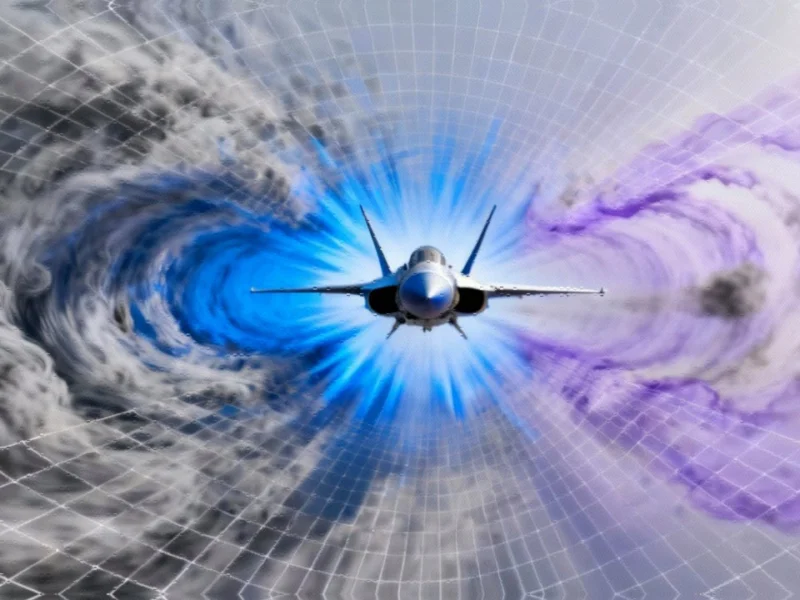Note: Featured image is for illustrative purposes only and does not represent any specific product, service, or entity mentioned in this article.
Unlocking the Mysteries of Shock Wave Behavior
For engineers working with high-speed aerodynamics, explosive dynamics, and propulsion systems, accurately predicting shock wave behavior has long presented significant challenges. While powerful shock waves from explosions and supersonic objects have been relatively well-studied, their weaker counterparts have remained elusive in computational modeling—until now. A groundbreaking study from Yokohama National University has revealed why traditional approaches fail to capture the true nature of very weak shock waves and offers a path toward more accurate simulations.
The Weak Shock Wave Conundrum
Shock waves represent instantaneous pressure changes that propagate through media, whether from explosive events or objects moving faster than sound. Weak shock waves exhibit the same fundamental characteristics as their stronger counterparts—changes in pressure, density, and velocity—but operate at much smaller scales and speeds closer to sound velocity. According to Professor Keiichi Kitamura of Yokohama National University’s Faculty of Engineering, current computational models struggle significantly with accurately representing these subtle phenomena.
“Shock waves cause instantaneous compression, resulting in increased entropy; thus, precise computations of flows involving shock waves are crucial,” Kitamura explained. This entropy increase, representing growing disorder as the wave propagates, forms the core challenge in shock wave simulation.
Bridging Theory and Computation
The research team discovered that conventional computational approaches categorize very weak shock waves as “diffused,” a classification that fails to account for the nuanced variables affecting wave behavior during propagation. Their analysis, published in Physics of Fluids, reveals that numerically represented shock waves can be classified into three distinct regimes: dissipated, transitional, and thinly captured.
Kitamura noted that unexamined numerical simulations automatically adjust assumed physical parameters to match calculated entropy. “This work identified the mechanism of the diffused weak shocks—it was caused in the entropy generation process within the numerically expressed shockwaves,” he said. This insight helps bridge the critical understanding gap between theoretical predictions and physical measurements of weak shock waves.
Computational Methods and Their Limitations
Finite volume methods, commonly used in numerical simulations, handle discontinuities by conserving variables even at shock boundaries. However, as Kitamura explained, “Computing shock waves using finite volume methods is not always stable and, under certain conditions, presents challenges owing to their discontinuous nature.”
The team’s findings come at a time when computational breakthrough improves weak shock wave modeling across multiple engineering disciplines. These advances parallel other industry developments in computational technology that are transforming how engineers approach complex physical phenomena.
Practical Applications and Future Implications
The improved understanding of weak shock wave behavior has significant implications for aerospace engineering, propulsion system design, and safety protocols. More accurate simulations could lead to safer and more economical designs for future rockets and supersonic aircraft, potentially reducing development costs and improving performance reliability.
As research in this field advances, it intersects with broader market trends in technology investment and development. The precision required in shock wave modeling reflects similar demands across engineering sectors, where recent technology funding initiatives are driving innovation in computational methods.
Global Research Collaboration
The international nature of this research underscores the collaborative effort required to solve complex engineering challenges. Gaku Fukushima, who served as corresponding author on the paper, conducted the research as a Japan Society for the Promotion of Science postdoctoral fellow at Yokohama National University before moving to his current position at Université de Sherbrooke in Canada.
This global approach to research mirrors patterns seen in other sectors, where related innovations often emerge from international partnerships. Similarly, the financial implications of such technological advances can be significant, as evidenced by industry developments in defense and aerospace sectors where computational improvements directly impact corporate performance.
The Path Forward
The Yokohama team’s work represents a fundamental shift in how engineers approach shock wave simulation. By identifying the specific mechanisms behind numerical diffusion in weak shock representation, researchers can now develop more targeted approaches to improve model accuracy. This advancement not only benefits aerospace applications but could also impact fields as diverse as medical technology (shock wave lithotripsy), materials science, and environmental engineering.
As computational power continues to grow and modeling techniques become more sophisticated, the precise prediction of shock wave behavior moves from theoretical challenge to practical engineering tool—potentially transforming how we design everything from high-speed transportation to protective systems against explosive threats.
This article aggregates information from publicly available sources. All trademarks and copyrights belong to their respective owners.



